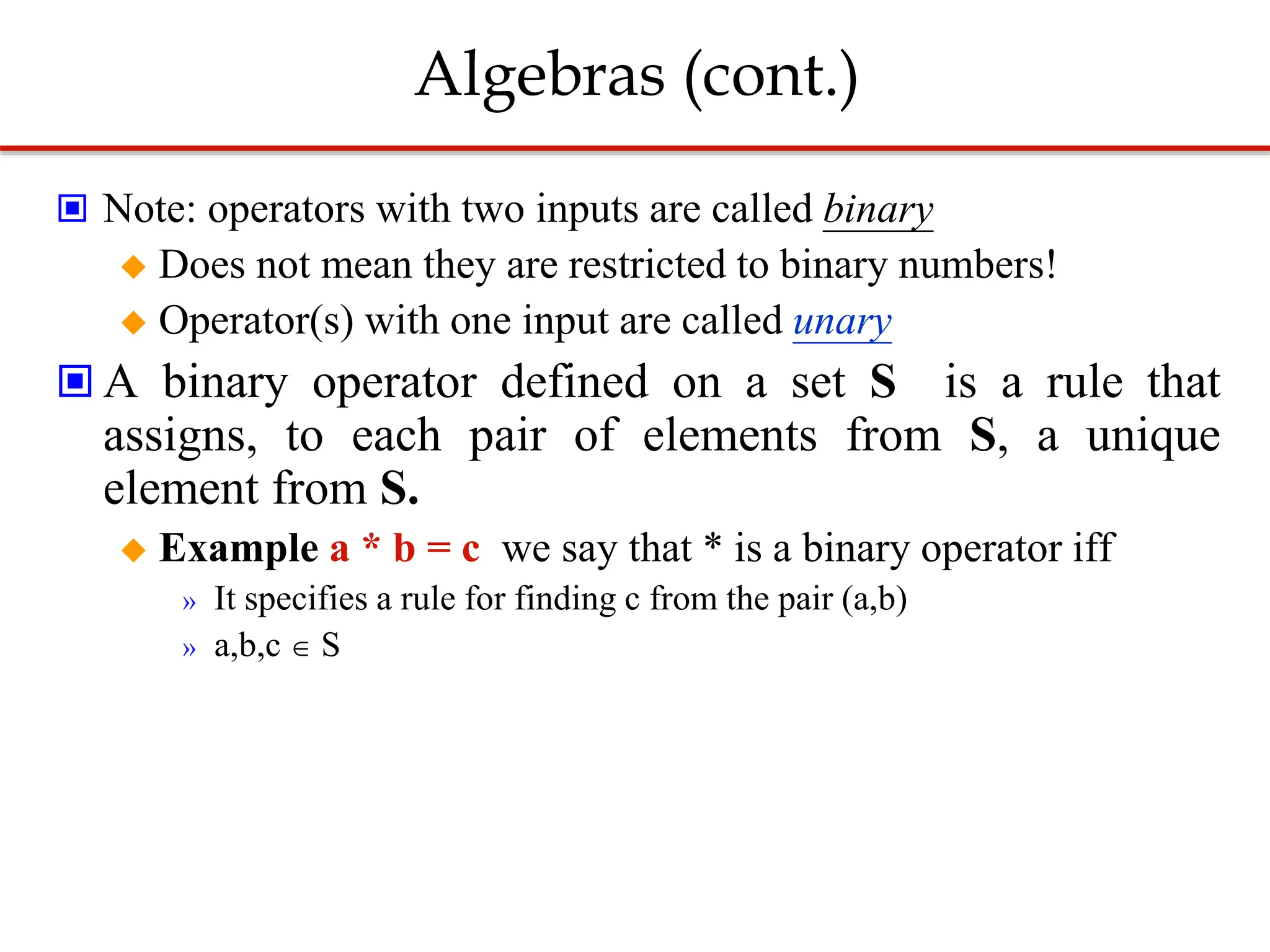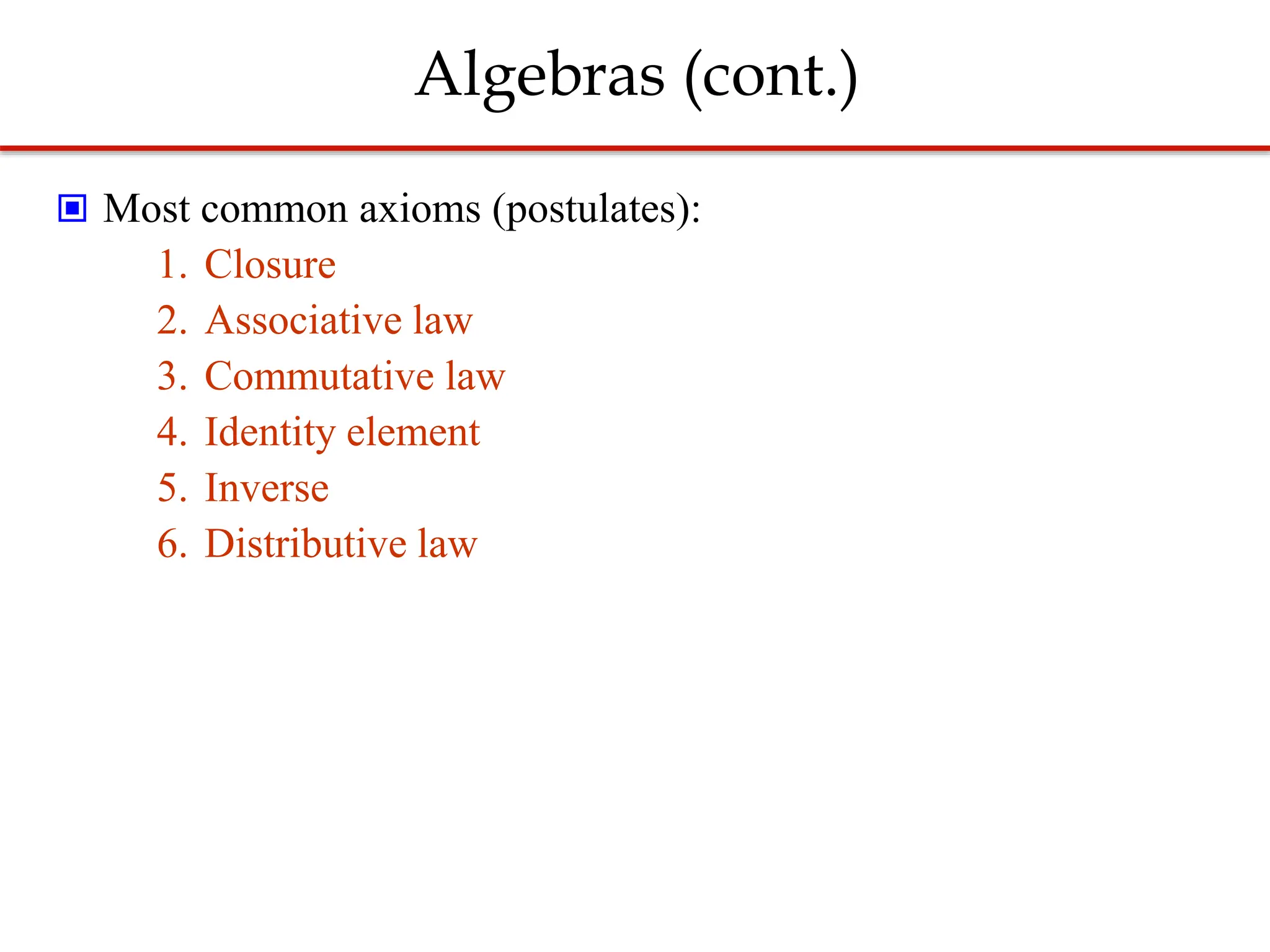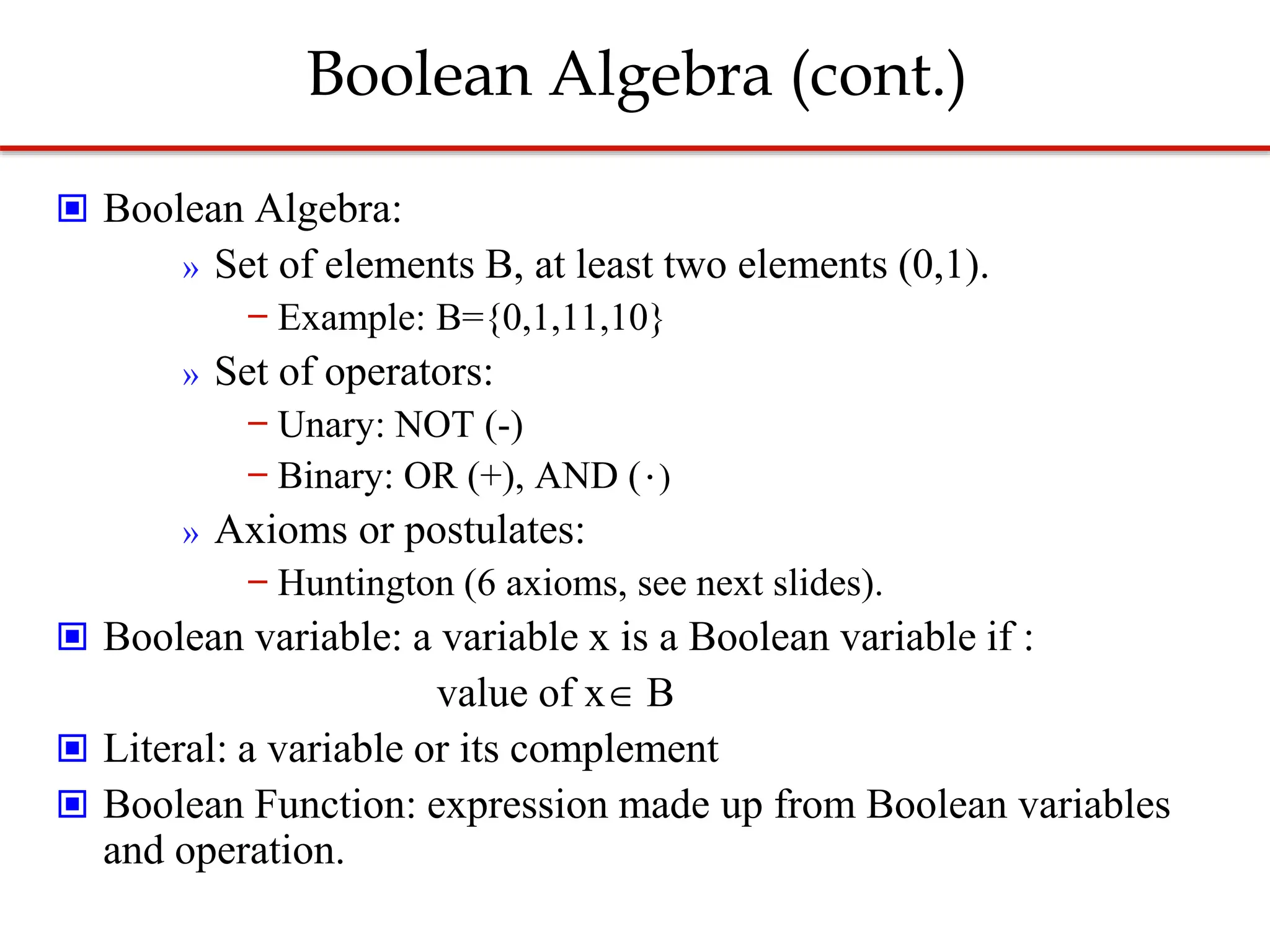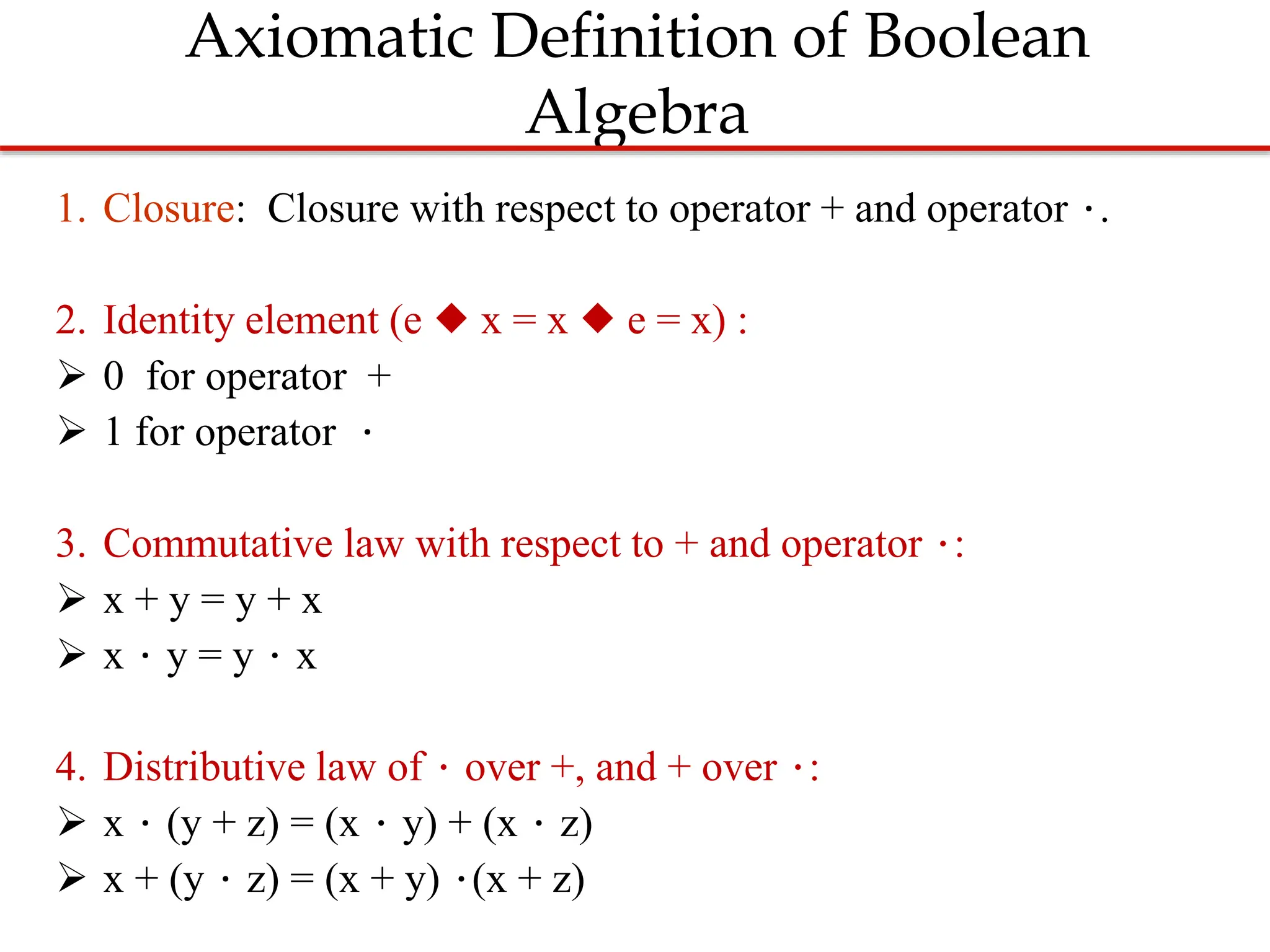The document discusses Boolean algebra and its application to digital logic design. It defines Boolean algebra as a mathematical system used to represent binary variables and logical relationships. The key aspects covered include:
- The axiomatic definition of Boolean algebra using Huntington's postulates.
- The representation of Boolean functions using truth tables and logic gate diagrams. Boolean functions express logical relationships between binary variables.
- Techniques for manipulating and minimizing Boolean expressions through algebraic rules to simplify logic circuits.



































![Complement of a Function
Example
Give the complement of the function F= [x(y'z'+yz)], by truth
table and algebraically?
Truth table:
x y z F F'
0 0 0 0 1
0 0 1 0 1
0 1 0 0 1
0 1 1 0 1
1 0 0 1 0
1 0 1 0 1
1 1 0 0 1
1 1 1 1 0
Algebraically:
F' = [x(y'z'+yz)]'
= x' + (y'z'+yz)'
= x' + (y'z')' (yz)‘
= x' + (y+z) (y'+z')
= x' + yz‘+y'z
Using Dual
Dual of F = x + (y‘+ z‘ ) (y+z)
F ' = x' + (y+z) (y'+z')](https://image.slidesharecdn.com/chapter2-231226045700-90053ee9/75/Chapter-2-pptx-36-2048.jpg)
































